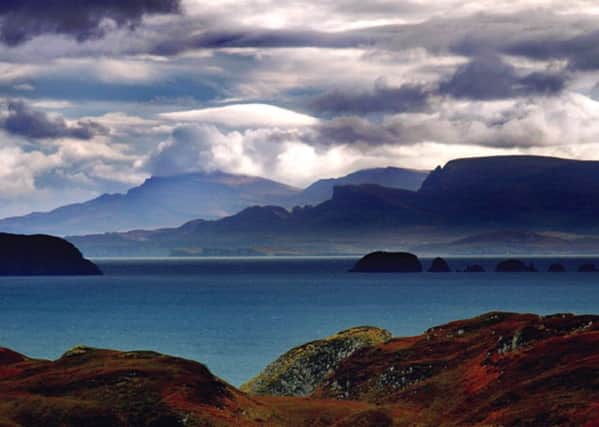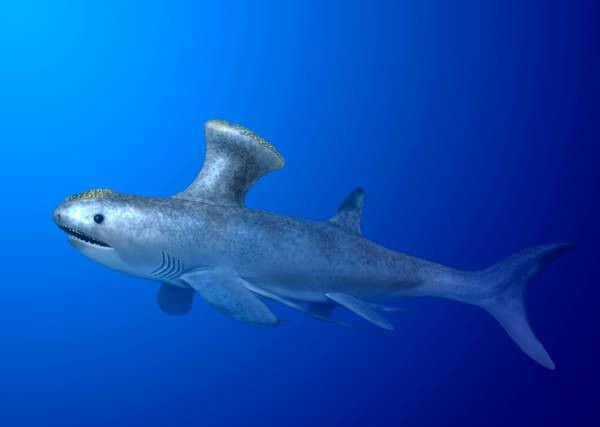Scotland's dinosaur fossils and where to find them


However whether you believe in the existence of the Loch Ness Monster or not, Scotland’s prehistoric past has been well explored.
In fact, as recently as 2.5 million years ago, Scotland had only just split from the North America and begun its continental drift across the newly formed Atlantic Ocean.
Advertisement
Hide AdAdvertisement
Hide AdThis meant our shores were, at one time, inhabited by some of the biggest, strangest and most fascinating creatures to ever walk the Earth.


“The Dinosaur Isle”
The Isle of Skye is the dinosaur capital of Scotland. Hundreds of fossils have been discovered on the Misty Isle from some truly gargantuan beasts.
In 1982, the footprints of a family of Ornithopods - two legged herbivores - left 165 million years earlier during the Middle Jurassic period were unearthed on the beach of An Corran at Staffin.
Ornithopods grew to up to 15m (50 feet) long and weighed over 20 tonnes, however the size of these prints suggests they were slightly smaller.


The giant footprints are usually covered by the rough seas or sand, meaning the best time to see them for yourself is after a winter storm when the tide recedes and washes away the sand.
To find them, simply head for the beach at Staffin and walk down the main ramp that leads on to the sand, the prints are relatively close to the shore, but be careful during rough weather.
Cementing Skye’s reputation as the land of the giants are the footprints of primitive Sauropods uncovered on the shore near the ruins of Duntulm Castle as recently as 2015.
Advertisement
Hide AdAdvertisement
Hide AdThese behemoths were distant relatives of the Brontosaurus and Brachiosaurus, famed for their long necks and could grow to over 70m (100 feet) long.
The largest Sauropods ever weighed over 150 tonnes, though their primitive Duntulm cousins were much smaller, measuring just four metres (15 feet) long and barely tipping the scale at just ten tonnes.
These 170 million-year-old Jurassic prints are easily visible at low tide South of Duntulm Castle at the North end of Trotternish.
Several other footprints and fossils are on display at the Staffin Museum, two miles South of Staffin bay opposite the Kilt Rock.
The Giant Scorpions of Fife
Picturesque fishing villages, stunning views of the Firth of Forth and a rich natural history have made Fife is one of the country’s most scenic regions.
However, 330 million years ago it was a much more terrifying place to visit.
During the Devonian period, the Kingdom’s coastline was inhabited by a terrifying six-foot tall, amphibious sea scorpion known as Hibbertopterus.
Advertisement
Hide AdAdvertisement
Hide AdThese monsters would have been armour plated to protect them from predators in the sea at the time and had a sharp, spear like tail it used to skewer prey.
Tracks made by the Hibbertopterus were discovered on a beach in North-East Fife in 2010, however its location has been kept secret by paleontologists keen to preserve the trackway.
Bearsden Shark
Around the same time that Fife was being terrorised by giant sea scorpions, a bizarre looking predator ruled the waves on the West coast.
Akmonistion Zangerli, to give it its full name, only grew to around a metre long at its largest, but that wasn’t what amazed paleontologists when it was uncovered in the Manse Burn in 1981.
Instead, it’s strange “anvil-like” dorsal fin amazed scientists, leading to it gaining the nickname of “The ironing board shark.”
The fossil is regarded as one of the best preserved examples of the creature found anywhere in the world.
It’s currently on display at Glasgow’s Hunterian Museum.
The Hand Beast
The discovery of footprints - or handprints - made by the Chirotherium, or “hand-beast” in Latin, on the Isle of Arran caused great excitement in the paleontological community in 2003.
Advertisement
Hide AdAdvertisement
Hide AdAt the time, they were the largest prints of their kind anywhere in the world and gave scientists a unique insight into the life of this bizarre creature.
Measuring around three metres (12 feet) in length, these crocodile-like creatures walked on all fours and developed an outermost toe - or finger - on their feet to enable them to walk on soft surfaces during the Triassic period around 270 million years ago.
That means Chirotherium was roaming around the island several million years before the island’s highest mountain, Goatfell, even started to form
The discovery of the protruding toe amazed scientists due to its human-like makeup, before it’s purpose was discovered.
The tracks can be found in the Shiskine valley near Blackwaterfoot.